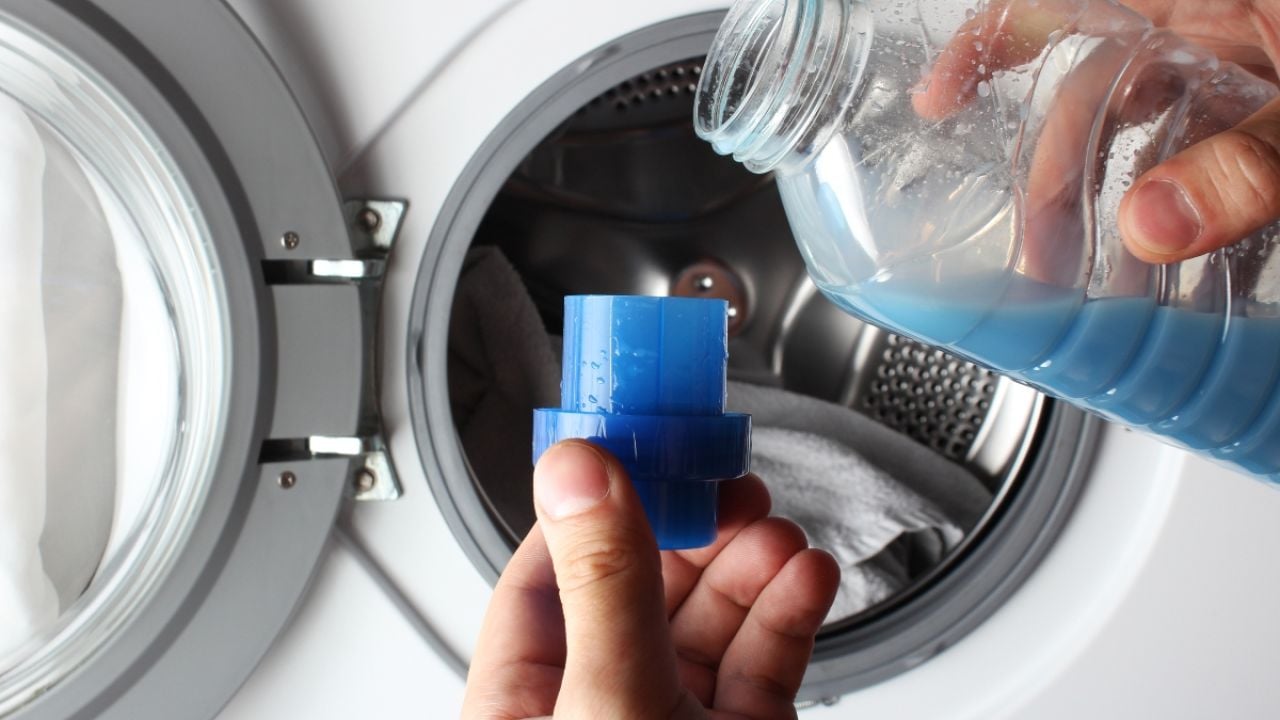
Editor’s note: On August 16, 2022, this article was updated with information about EWG VERIFIED® laundry products and EWG’s Healthy Living app, adding new research on the health hazards linked to fragrance chemicals.
Using fabric softeners sounds like a no-brainer. These popular laundry products promise soft, fresh-smelling clothes, free of static and wrinkles, along with less stretching, fading and pilling.
But in-wash fabric softeners and heat-activated dryer sheets can pack a powerful combination of chemicals that can harm your health, damage the environment and pollute the air, inside and outside your home.
EWG recommends looking for the EWG VERIFIEDä mark on laundry products and searching for safer fabric softeners in our Guide to Healthy Cleaning.
Below are the worst chemicals to watch for in your laundry basket – and what to use instead.
Quats
Quaternary ammonium compounds, or quats, make clothes feel soft and wearable right out of the wash, but some are known to trigger asthma and may be toxic to the reproductive system.
Check labels and product websites for these ingredients, and avoid them: distearyldimonium chloride and others ending in “monium chloride” as well as vague terms like “biodegradable fabric softening agent” and “cationic surfactant.”
Fragrance
There are nearly 4,000 fragrance ingredients in common household products, and scarcely any way to know what they are.
Your fabric softener may contain phthalates, which disperse scent; synthetic musks such as galaxolide, which accumulate in the body; and much more.
Fragrance mixes can cause allergies, skin irritations such as dermatitis, difficulty breathing and potential reproductive harm. Research shows that scents may also cause health problems when vented outdoors, especially for asthmatics and those sensitive to chemicals.
Preservatives and colors
Like “fragrance,” the terms “preservatives” and “colors” or “colorants” on an ingredient label may refer to any number of chemicals.
The most worrisome preservatives in fabric softeners include the potent skin allergen methylisothiazolinone, and glutaral, known to trigger asthma and skin allergies. Glutaral, or glutaraldehyde, is also toxic to marine life. Among artificial colors, D&C violet 2 has been linked to cancer. Others may contain impurities that can cause cancer.
So avoid mystery cocktails and chemicals of concern in fabric softeners and conditioners, whether in pellets, crystals, bars or single-dose packs.
Or skip altogether and try these other ideas
- Add a half-cup of distilled white vinegar to your washing machine during the rinse cycle. Don’t worry – the smell doesn’t linger on clothes.
- If you’re not line-drying, run the dryer with just your clothes inside. (To reduce static, do not over-dry.) Not only do dryer sheets contain a variety of chemicals, but neither the plant-based nor polyester types are reusable, so they create extra waste.
- Try 100 percent wool dryer balls. Makers of these solid balls of felted wool, or felted wool wrapped around a fiber core, say that wool or its natural lanolin soften laundry and reduce static. Generally safe for sensitive skin and babies, the balls also lift and separate clothes in the dryer, shortening drying time and saving energy.
You can buy ready-made balls or make your own with wool batting or wool yarn. Look for unscented versions and always be cautious if applying essential oils, which can cause allergic reactions after just a few contacts.
Learn more about EWG VERIFIED® laundry products and other household cleaners. When you see the EWG VERIFIED™ mark on products, you can trust they meet EWG’s strictest standards for health and transparency.
Shoppers on the go also can download EWG’s Healthy Living App to get ratings and safety information on household cleaning products.



